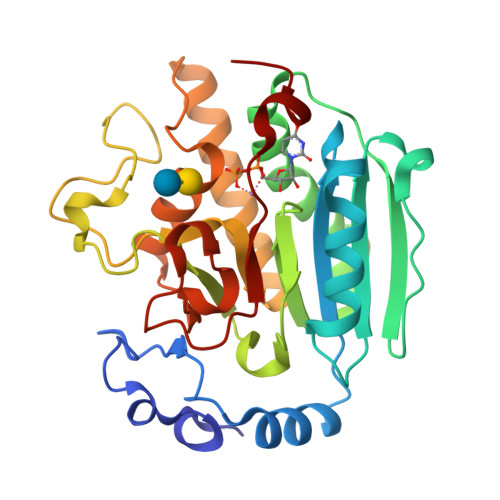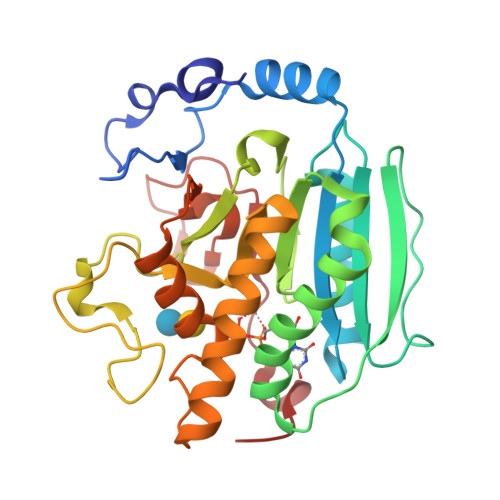Structural Basis of Ordered Binding of Donor and Acceptor Substrates to the Retaining Glycosyltransferase, Alpha -1,3 Galactosyltransferase
Boix, E., Zhang, Y., Swaminathan, G.J., Brew, K., Acharya, K.R.(2002) J Biological Chem 277: 28310
- PubMed: 12011052
- DOI: https://doi.org/10.1074/jbc.M202631200
- Primary Citation of Related Structures:
1GWV, 1GWW, 1GX0, 1GX4 - PubMed Abstract:
Bovine alpha-1,3-galactosyltransferase (alpha3GT) catalyzes the synthesis of the alpha-galactose (alpha-Gal) epitope, the target of natural human antibodies. It represents a family of enzymes, including the histo blood group A and B transferases, that catalyze retaining glycosyltransfer reactions of unknown mechanism. An initial study of alpha3GT in a crystal form with limited resolution and considerable disorder suggested the possible formation of a beta-galactosyl-enzyme covalent intermediate (Gastinel, L. N., Bignon, C., Misra, A. K., Hindsgaul, O., Shaper, J. H., and Joziasse, D. H. (2001) EMBO J. 20, 638-649). Highly ordered structures are described for complexes of alpha3GT with donor substrate, UDP-galactose, UDP- glucose, and two acceptor substrates, lactose and N-acetyllactosamine, at resolutions up to 1.46 A. Structural and calorimetric binding studies suggest an obligatory ordered binding of donor and acceptor substrates, linked to a donor substrate-induced conformational change, and the direct participation of UDP in acceptor binding. The monosaccharide-UDP bond is cleaved in the structures containing UDP-galactose and UDP-glucose, producing non-covalent complexes containing buried beta-galactose and alpha-glucose. The location of these monosaccharides and molecular modeling suggest that binding of a distorted conformation of UDP-galactose may be important in the catalytic mechanism of alpha3GT.
Organizational Affiliation:
Department of Biology and Biochemistry, University of Bath, Claverton Down, Bath BA2 7AY, United Kingdom.





















